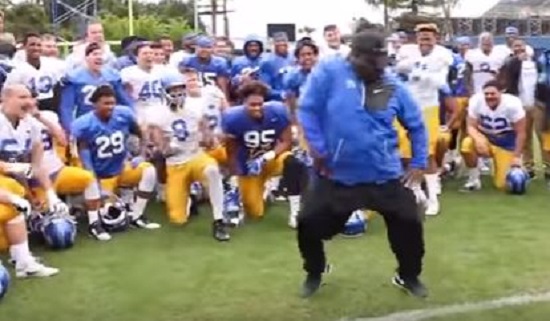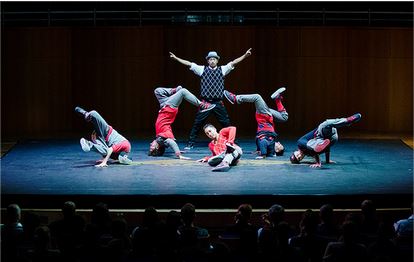Just as modern dance broke away from traditional ballet (and postmodern dance broke away from modern dance), urban dance (AKA street dance, break dancing, or hip hop), is breaking away from other forms of contemporary dance. But urban dance is still in its rebellious stage. (To emphasize that they call their events “battles”.) Just as pet cats can only be domesticated within limits, giving rise to the phrase “like herding cats”, urban dance is resisting most attempts to standardize it and create a syllabus. The hard core practitioners don’t want to be taught in a classroom or studio: they want to teach themselves (perhaps by watching YouTube and copying-then-modifying others’ moves). Apparently the purest “break dancers” don’t call themselves break dancers. Nonetheless, cutting-edge dance schools like Arizona State University are offering classes, which are over-subscribed. (And traditional social dance studios are besieged by wannabe hip hop dancers. Even the word “ballroom” now connotes “old-fashioned”.) And while time at the barre in ballet training likely stood modern/postmodern dancers well, likely early training in gymnastics could do the same for urban dancers. Conference speakers pointed out that both ballet/modern/postmodern dancers and urban dancers could have problems with injuries.
We were fascinated with Catherine Limbertie’s survey of Toronto’s Riverdale Collegiate high school students regarding their views on break dancing—-presented at the combined conference of the World Dance Alliance-Americas (WDA-A) and the Dance Critics Association (DCA) in Vancouver, BC, Canada during July 29-August 4. Getting a public school to allow a researcher to do such a survey, and being able to extract helpful findings from a bunch of high school students, were challenging enough. As is common in such research, what people tell the surveyors is one thing and what they do is another. Break dancing is so trendy at the Riverdale Collegiate that there is a break dancing club, which was said to have 100 members, but very few members actually seemed to show up at its meetings/practices. But break dancing skills have considerable cachet; students with recognized break dancing skills used them in their campaigns for offices.


